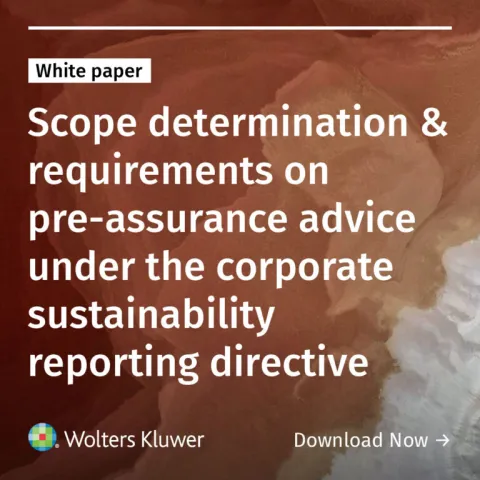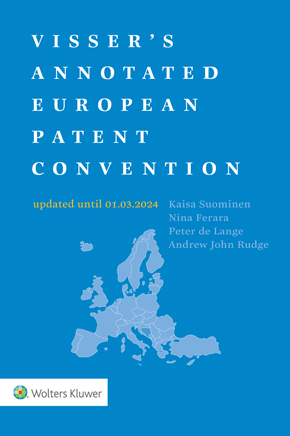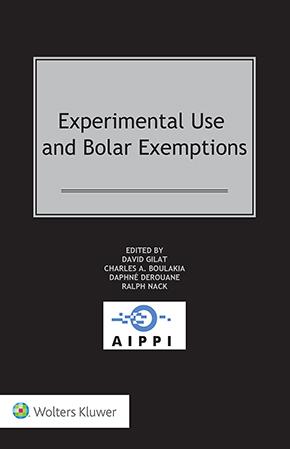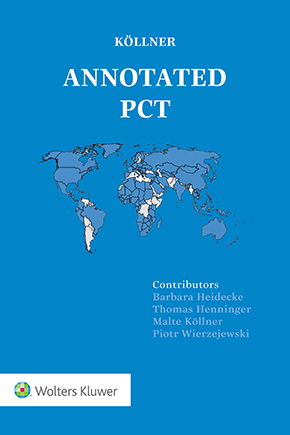The long arm of the law: the UPC’s approach to jurisdiction post-Electrolux
July 17, 2025
As most IP practitioners will be aware, on 25 February 2025 the Court of Justice of the European Union handed down its ruling in BSH v Electrolux (C-339/22). In summary, the CJEU concluded that it is possible under Article 4(1) of Regulation (EU) No 1215/2012 (“Brussels Recast Regulation”) for a claimant to bring an infringement action in the court of the EU Member State where a defendant is domiciled even if the subject of the litigation is a patent granted in another Member State. In interpreting Article 24(4) Brussels Recast Regulation, the CJEU held that if the validity of a patent in an EU Member State is raised as a defence, the court seised with the infringement action will not be able to rule on the validity of the patent as the EU Member State in which the patent is registered has exclusive jurisdiction to determine validity. The court seised may, however, continue to assess the infringement claim, although it has the option to stay the proceedings if there is a “reasonable and non-negligible chance” that the EU Member State court competent to determine validity may find the patent invalid.
In contrast, the CJEU ruled that Article 24(4) Brussels Recast Regulation does not confer exclusive jurisdiction for patent validity on non-EU countries so under certain circumstances it is possible for an EU Member State court seised with an infringement action to also consider the validity of non-EU patents, although this will not affect the existence of the foreign patent on its national register and thus the ability of the patentee to assert it against a third party. This applies in principle to any patent registered in a non-EU country unless that country is a contracting state to the Lugano Convention or a signatory to a bilateral agreement that gives that country exclusive jurisdiction for the validity of patents granted in that non-EU country. However, if proceedings are already pending before a court of the relevant non-EU country when the EU court is seised, the EU court may be required to stay or even terminate the proceedings before it under Articles 33 and 34 Brussels Recast Regulation.
The impact of the Electrolux decision extends beyond national EU proceedings to the Unified Patent Court (“UPC”). According to Article 31 of the UPC Agreement (“UPCA”), the UPC’s international jurisdiction shall be established in accordance with Brussels Recast Regulation and the Lugano Convention (where applicable). As the UPC is considered a common court of certain EU Member States, it should be treated as equivalent to a court in those EU Member States (Article 71a(1) Brussels Recast Regulation) and it has jurisdiction on an equivalent basis (Article 71b(1) Brussels Recast Regulation). As such, although the CJEU’s decision in Electrolux related to a claim brought in a Swedish national court against a defendant domiciled in Sweden1 it applies equally to claims in the UPC against defendants domiciled in UPC territories.
Unsurprisingly, the UPC has fully embraced the ruling of the CJEU in Electrolux and continued the jurisdictional trajectory that had already begun to develop. In this article we review recent UPC case law and the future impact on cross-border litigation strategy.
Cases prior to the Electrolux decision
Decisions recognising the ‘long arm jurisdiction’ of the UPC had already emerged prior to the Electrolux decision. The Düsseldorf Local Division in Fujifilm v Kodak2 decided in January 2025 that it had jurisdiction to decide an infringement action brought in relation to both the German and UK designations of Fujifilm’s European patent on the basis of Article 4 Brussels Recast Regulation and the principle established in Owusu v Jackson (C-281/02). However, the court was not required to make a ruling on whether it had jurisdiction over revocation claims relating to patents in non-EU Member States as Kodak’s revocation action challenged the validity of only the German designation of the patent, not the UK designation. As a result, the Court did not feel the need to delay judgment until after the CJEU’s Electrolux decision was handed down. Having found that the German designation of the patent was invalid, the Court dismissed the infringement claim relating to both the German and UK designations on the basis that Kodak had not demonstrated that there would be differences in the validity assessment between the UK and Germany.
In contrast, in Hurom v NUC Electronics,3 in which NUC challenged Hurom’s entitlement to the asserted patent in Europe based on alleged discrepancies in the transfer documents, the Mannheim Local Division decided to stay infringement proceedings in relation to the Polish, Spanish and UK designations of Hurom’s patent until after the Electrolux decision, which was not delivered until after the oral hearing had taken place. In the meantime, the proceedings continued in relation to Hurom’s patents in UPC territories, resulting in a finding of infringement against NUC (the entitlement challenge having been rejected). The Court stated that the proceedings were separated due to the lack of guidance on the international jurisdiction to be applied by the UPC pursuant to Article 71a and 71b Brussels Recast Regulation, including towards defendants domiciled outside the EU (in this case, Korea). The decision in the main proceedings is currently under appeal and it is not yet clear how the Mannheim Local Division will deal with the separated proceedings relating to the Polish, Spanish and UK designations. Given the involvement of the Korean NUC entity, the points at issue go beyond those addressed by the CJEU in Electrolux, which only involved the application of Article 4(1) Brussels Recast Regulation to a defendant domiciled within the EU.
Application of the Electrolux decision by the UPC
One of the first notable UPC decisions to apply Electrolux was the Paris Local Division’s decision in IMC Creations v Mul-T-Lock.4 Mul-T-Lock France and Mul-T-Lock Switzerland were sued for infringement of a European patent having unitary effect in the contracting states that had ratified the UPCA and which was also in force as a classical European patent in Spain, the UK and Switzerland. In response, the Mul-T-Lock defendants filed a preliminary objection contesting the jurisdiction of the UPC to hear the infringement action concerning the national designations in Spain, the UK and Switzerland. The claims against Mul-T-Lock Switzerland were later withdrawn but IMC maintained its infringement claim against Mul-T-Lock France, including infringement of the Swiss, Spanish and UK designations of the patent.
The Paris Local Division noted that, as Switzerland is a party to the Lugano Convention, the same principles of jurisdiction and the same exceptions relating to validity apply as in the Brussels Recast Regulation. The Court therefore considered itself competent to consider infringement of the Spanish and Swiss designations of the patent, although acknowledged that it might be necessary to suspend the proceedings if there was a reasonable chance that the patent would be annulled by the Swiss or Spanish courts based on the exceptions in the Lugano Convention and the Brussels Recast Regulation, respectively. However, following the CJEU’s decision in Electrolux, Article 24(4) Brussels Recast Regulation does not apply to the UK as it is neither a party to the Lugano Convention (which has provisions equivalent to Article 24(4) Brussels Recast Regulation) nor an EU Member State. As such, the Court considered itself competent to assess infringement of the UK designation of the patent and rule on its validity provided that any decision only has inter partes effect.
In another post-Electrolux decision, Dainese v Alpinestars5, the Milan Local Division held that it had “universal jurisdiction to adjudicate on infringement issues related to European patents over the defendants domiciled in Italy”. Dainese had brought an action alleging infringement of its European patent in the UPC territories and in Spain. The Court considered that it was competent to consider the infringement of the Spanish designation of the patent as the courts of the UPC have the same territorial jurisdiction as national courts of EU Member States and the defendant was domiciled in Italy. In coming to this decision, the Judge Rapporteur stated that Article 71b Brussels Recast Regulation gives the UPC express jurisdiction over disputes relating to European patents even if they relate to non-UPC countries. It will be interesting to see how this is addressed in the substantive decision as this is a reading of Article 71b that many would dispute.
The long arm jurisdiction of the UPC is also a live point in Genevant and Arbutus v Moderna6, which is due to be heard by The Hague Local Division. There is no decision on this aspect of the case yet but the Court’s approach to adjacent jurisdictional issues in a recent procedural decision indicates a permissive approach to jurisdiction post-Electrolux. The claimants initiated actions against a number of Moderna companies both within and beyond the UPC territories and Moderna filed preliminary objections questioning both the local and international jurisdiction and competency of The Hague Local Division. Moderna argued that the UPC did not have international jurisdiction over Moderna Spain, Poland or Norway as those companies did not fall within the UPC territory and the claimants had not conclusively alleged that they had committed infringing acts within the UPC territory so Articles 7(2) and 8(1) Brussels Recast Regulation did not apply7. Further, Moderna alleged that The Hague Local Division did not have local jurisdiction over a number of Moderna companies including Moderna France, Italy, Belgium, Denmark, Germany, Sweden, Norway, Portugal, Poland and Spain as those defendants were not domiciled in the Netherlands and the claimants had not accused them of committing infringing acts in the Netherlands. Finally, Moderna argued that even if the Court did have international competence for a case against all of the Moderna entities, it lacked long-arm jurisdiction for alleged infringing acts outside the UPC territory. The Court declined to comment on Moderna’s final argument, reserving this point to be dealt with in the main proceedings, but addressed Moderna’s other jurisdictional arguments.
In relation to the Court’s international jurisdiction, the claimants argued that the Moderna companies were carrying out infringement both individually and together with Moderna Netherlands, which was said to have a central role in sales activities as a ‘spider in the web’, and thus the Court had jurisdiction pursuant to Article 8(1) Brussels Recast Regulation. Under Article 8(1), a company in a Member State may be sued in another Member State where it is a co-defendant with a defendant domiciled in that Member State provided the claims are so closely connected that it is expedient to hear and determine them together to avoid the risk of irreconcilable judgments resulting from separate proceedings. The claimants also relied on the fact that Moderna Spain was the holder of the European marketing authorisation and one of the manufacturers of Moderna’s vaccine, Spikevax, which was commercialised within the UPC territory. In coming to its decision, the Court noted that the Brussels Recast Regulation applied directly to Moderna Spain and Poland as they are domiciled in EU Member States, and equivalent rules applied to Moderna Norway as Norway is a party to the Lugano Convention, which contains articles corresponding to Articles 7(2) and 8(1) Brussels Recast Regulation. The Court stated that the specific facts and locations of the alleged infringement were matters for the substantive hearing but considered there to be sufficient evidence to support the allegation that Moderna Spain, Poland and Norway infringe the relevant national patent designations in their local jurisdictions jointly with Moderna Netherlands. On this basis, the Court found that the UPC did have jurisdiction pursuant to Article 8(1) Brussels Recast Regulation and Article 7(1) Lugano Convention.
In relation to The Hague Local Division’s competence to hear cases against Moderna companies not domiciled in the Netherlands (local jurisdiction), the Court rejected Moderna’s argument on the basis that one of the defendants was domiciled in the Netherlands, the defendants had a commercial relationship (because they belonged to the same group – the Court warned against interpreting the link between the defendants too narrowly) and the action against each defendant related to the same alleged infringement so the requirements under Art 33(1)(b) UPCA were satisfied. The decision was described as being aligned with the UPC’s main principle of efficiency as it limited unnecessary additional litigation. Arguably, though, the approach is contrary to established CJEU case law, in particular Roche v Primus (C-539/03). In that case, the CJEU did not accept that subsidiaries of the same parent company selling the same allegedly infringing products in their respective local markets were so closely connected that it was expedient to hear and determine the patent infringement claims against them together to avoid the risk of irreconcilable judgments under Art 6(1) Brussels Recast Regulation. Since neither the alleged patent infringements nor the applicable law were the same for the various defendants, there was no risk of irreconcilable decisions as the legal and factual situations differed. However, Roche v Primus was not addressed by The Hague Local Division in its decision.
Evidence to support infringement beyond the UPC territory
Although the early decisions indicate an eagerness by the UPC to find jurisdiction to consider claims extending beyond the UPC territory, they also suggest that the UPC will be strict when requiring evidence to support infringement beyond the UPC states. For example, in Seoul Viosys v Laser Components8the Paris Local Division commented that a claim for infringement in the United Kingdom should be admissible in principle in light of Electrolux. However, the permanent injunction and other remedies requested by Seoul Viosys9 were limited to the territory of France based on the evidence presented to the Court. Seoul Viosys had failed to provide evidence of acts of infringement in any jurisdiction outside of France and had only brought the action against the French entity, Laser Components SAS, which could not support the acts of the group as a whole10.
Similarly, in the Hurom v NUC proceedings discussed above, although the Court decided to postpone the proceedings in relation to the Polish, Spanish and UK designations of Hurom’s patent due to the expected Electrolux decision, it refused to do so in relation to the Turkish designation as Hurom had failed to allege sufficient facts to support a claim for infringement in Turkey regardless of the jurisdiction issues. The Court noted that it was “mere speculation” that the term “Europe” used in relation to NUC’s Europe branch encompassed Turkey and the test product purchased had only CE, UK and CA marks, which would not cover sales in Turkey11. As such, Hurom’s claim in relation to infringement in Turkey was deemed inadmissible.
Further, in separate proceedings between Hurom and NUC relating to a different Hurom patent12 the Paris Local Division confirmed that, in light of Electrolux, a claim concerning infringing acts in Poland (a non-UPC territory) was admissible in principle, however the claimant had failed to provide enough evidence to support the portion of its claim relating to Poland so the claim was dismissed.
Amendments to UPC proceedings post-Electrolux
Unsurprisingly, a number of parties have sought to amend their pleadings following the Electrolux decision to encompass infringement claims for patent designations in non-UPC contracting states. In TGI Sport v AIM Sport Development,13 the Court of Appeal upheld the Helsinki Local Division’s decision to allow AIM to amend its Statement of Claim to extend the territorial scope of the case to Spain. AIM argued that including Spain in the claim had not been considered when filing its Statement of Claim in view of the established case law at the time14 and the claim was only extended as a result of the Advocate General’s two opinions and the CJEU’s decision in Electrolux. In coming to its decision, the Court noted that, even if it was not impossible, at the time AIM filed its original Statement of Claim it could not have been expected to include a non-UPC territory and it was justified for AIM to amend its case following the developments in Electrolux. The Court acknowledged that, following the CJEU’s approach in Electrolux, adding the territory of Spain to the claim might lead to a decision to stay the proceedings and possibly a delay in the proceedings. However, this risk needed to be weighed against the possibility that refusing to extend the proceedings to cover Spain could result in irreconcilable decisions if AIM chose to commence separate national proceedings in Spain15.
The Munich Local Division followed the same approach in Syngenta v Sumi Agro16 when allowing Syngenta to amend its UPC claim to cover infringement of the Polish, Czech and UK designations of its European patent. The Court dismissed the defendants’ argument that the amendments were prohibited under Rule 263(2)(a) of the Rules of Procedure as they could have been made when the proceedings were commenced. Citing the Court of Appeal in TGI Sport v AIM, the Court noted that Syngenta could not have been expected to include the non-UPC territories based on the existing case law.
What does this mean for the UPC’s jurisdiction?
As can be seen from the recent case law, the UPC has fully embraced the CJEU’s decision in Electrolux and generally appears to be willing to allow claimants to expand the territorial scope of their claims to encompass non-UPC territories. A key theme of the UPC’s approach is the avoidance of irreconcilable judgments, for example this was significant factor highlighted in the Court of Appeal’s decision in TGI Sport v AIM. This aligns with the UPC’s goal of streamlining litigation of patents in Europe and promoting the harmonisation of patent law and the interpretation of the European Patent Convention across Europe. However, it also raises concerns that the UPC may go too far and that its approach is at odds with the general understanding that patents are territorial rights which should be interpreted by the appropriate national courts. The CJEU in Electrolux did not expressly rule that the UPC (as opposed to national EU courts) has jurisdiction to rule on patents granted in territories that are not signatories to the UPCA. Although the UPC is a common court of some EU member states, some would argue that the UPC’s jurisdiction should be limited to those countries that have signed the UPCA and agreed to participate in the UPC’s jurisdiction so the extension of its jurisdiction to include non-UPC territories (both within and outside the EU) remains a controversial topic.
While the UPC is currently happy to extend its jurisdiction to non-UPC territories, these are early days and the UPC is yet to grapple with thorny issues such as the application of the Rome II Regulation to determine the applicable law when assessing infringement actions of non-UPC or non-EU patents, the test to be applied when determining whether to grant an injunction in non-UPC jurisdictions and the practicalities of enforcing a final injunction in a non-UPC jurisdiction. It is also not yet clear how non-UPC courts will respond, particularly those such as the UK that do not benefit from Article 24(4) Brussels Recast Regulation or equivalent provisions.
In the UK there is currently no legislation that would block the courts of England and Wales from extending their jurisdiction to consider the validity of foreign patents. The courts arguably have jurisdiction to do so, although to date they have chosen not to under the common law principle established in British South Africa Co v Companhia de Moçambique [1893] AC 602 which, strictly, is limited to foreign land and not IP rights. The point is yet to be considered by the English courts following the UK’s exit from the EU and the courts may feel emboldened to expand their own jurisdiction in response to Electrolux and subsequent UPC decisions. An alternative may be for the UK Government to accelerate its efforts to reach an agreement on the UK’s accession to the Lugano Convention or seek to negotiate a bilateral agreement that contains similar provisions respecting exclusive territorial jurisdiction relating to patents. In any event, such disputes are likely to raise issues of comity which are already a hot topic in other areas, for example the current willingness of the English court to grant interim licences in FRAND disputes or the grant of anti-suit injunctions.
For patentees considering taking advantage of the UPC’s apparently permissive approach to jurisdiction following the Electrolux decision, it is notable that in all of the cases summarised above at least one defendant was domiciled in the same country as the UPC Local Division hearing the claim. It will be interesting to see how the UPC approaches situations in which the defendant is domiciled in a different UPC territory to the UPC division engaged in the dispute. Such circumstances may cause friction between the international rules of jurisdiction governed by the Brussels Recast Regulation and the internal jurisdiction of the UPC first instance courts governed by Article 33 UPCA and would test the boundaries of Article 71b Brussels Recast Regulation pursuant to which the UPC (as a whole) has jurisdiction where the courts of an EU Member State which is party to the UPCA would have jurisdiction. Similarly, it will be interesting to see how far the UPC is willing to stretch the ‘spider in the web’ principle, as exemplified in Moderna.
In addition to the question of which UPC division is most appropriate, there are a number of other strategic considerations that patentees should consider before commencing a claim in the UPC. For example, whether infringing acts are carried out by local subsidiaries of the defendant and whether the patentee has collated sufficient evidence in those jurisdictions (see, for example, Seoul Viosys and Hurom above). Further, under the UPCA the UPC’s authority only extends to European patents (whether of the unitary or classical variety). Therefore, if a patentee is looking for a true one-stop shop and is the proprietor of patents outside Europe, it may wish to commence proceedings in the national EU Member State court in which a defendant is domiciled rather than the UPC as national courts are not limited in such a way. Global litigation involving patents from countries beyond Europe, for example the US and China, is therefore possible in principle via national EU Member State courts.
The potential to derail proceedings by commencing revocation actions in national courts may also become a useful tool in future litigation strategies. For example, a defendant may choose to rely on the rules of lis pendens and consider commencing revocation actions or seeking declarations of non-infringement in non-UPC courts, such as the UK, to avoid its activities in those territories being considered by the UPC. Defendants might even choose to include in non-UPC actions declarations of invalidity or non-infringement of UPC patents in order to block a UPC action going ahead under the lis pendens rules – after all, this is the flip side of the Electrolux coin. Anti-suit injunctions from national courts to prevent wide-ranging infringement decisions or inter partes rulings on validity are also a tactic that potential defendants may consider.
The Electrolux decision has created a number of unanswered questions within the UPC and Europe as a whole. It remains to be seen how far the UPC is willing to go and how national courts will react.
- 1In relation to the infringement of a European patent designated in Austria, France, Germany, Greece, Italy, the Netherlands, Spain, the UK, Turkey, and Sweden
- 2UPC_CFI_355/2023, decision of 28 January 2025
- 3UPC_CFI_162/2024 and UPC_CFI_159/2024, decisions of 11 March 2025. The decisions themselves were released after the Electrolux decision but the panel considered that it would be inadmissible, or at least questionable, in the light of the parties’ right to be heard to base its decision on Electrolux without the parties having had the opportunity to comment on the decision and its implications.
- 4UPC_CFI_702/2024, decision of 21 March 2025
- 5UPC_CFI_792/2024, decision of 8 April 2025
- 6UPC_CFI_191/2025 and 192/2025, decision of 23 May 2025
- 7There were also Moderna defendants in the US, Switzerland and the UK but according to the judgment Moderna only substantiated its objection to the UPC’s international jurisdiction with respect to defendants Moderna Spain, Poland and Norway so the Moderna defendants in the other territories outside the UPC were considered to submit to international jurisdiction of the Court.
- 8UPC_CFI_440/2023, decision of 24 April 2025
- 9Seoul had not sought an injunction in the UK but had sought an order for the defendant to provide information about infringing sales in the UK.
- 10Laser Components’ website indicated a segmentation of sales in different territories, with the French entity only selling in France.
- 11Turkey is not a member of the European Economic Area (covered by the CE mark) or associated with the UK or Canada (covered by the CA mark).
- 12UPC_CFI_163/2024, decision of 23 May 2025
- 13UPC_CoA_169/2025, decision of 11 April 2025
- 14GAT v Luk, C-4/03, in which the CJEU ruled that only courts of the member state where a patent is in force have jurisdiction if validity is in issue
- 15As noted in the context of the Moderna proceedings, this is arguably inconsistent with the CJEU decision in Roche v Primus.
- 16UPC_CFI_566/2024, decision of 14 April 2025
You may also like















DXThomas
The various decisions quoted in the article show that the UPC is ready to go quite far. This has always been the aim of its proponents. It is also to be hoped that national courts will react. One way to re-establish a certain balance could be to extent the opposition period well above the 9 months as it is the case at present, for instance after a limitation action by the proprietor. After all, the proprietor is allowed to limit its patent during the latter’s life time. Why should third parties not have the possibility to centrally challenge a European patent at a fraction of the cost of that of the UPC by filing an opposition at the EPO. When one sees the survival rate of patents after appeal in opposition, this possibility should not be neglected. Only 15% of patents survive opposition and appeal, and around 50% are revoked. Those figures are based on published appeal decisions at the EPO. An interesting note is that in less than 10% of the cases, opponents bring documents which truly could not be found in EPO’s search files, like public prior use or PhD dissertations. This means that documents which should have been found during the search were not found. Often those documents are novelty destroying or a good base to deny inventive step. What is a long arm help good for, if a European patent can be easily challenged?